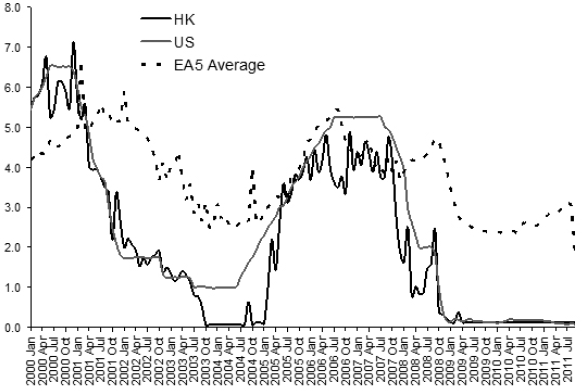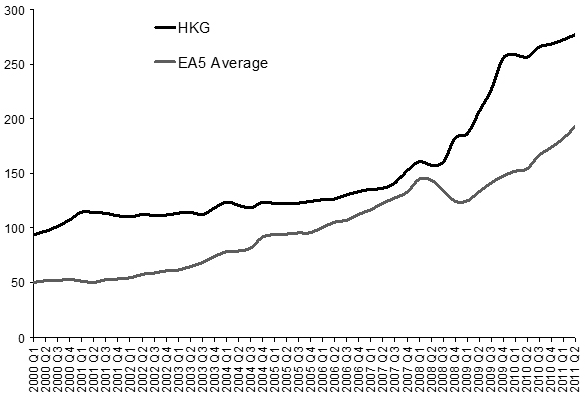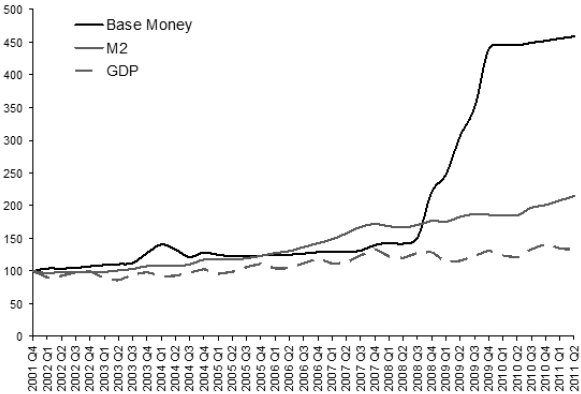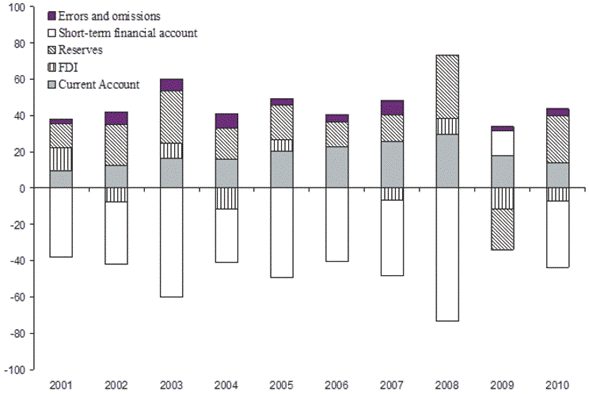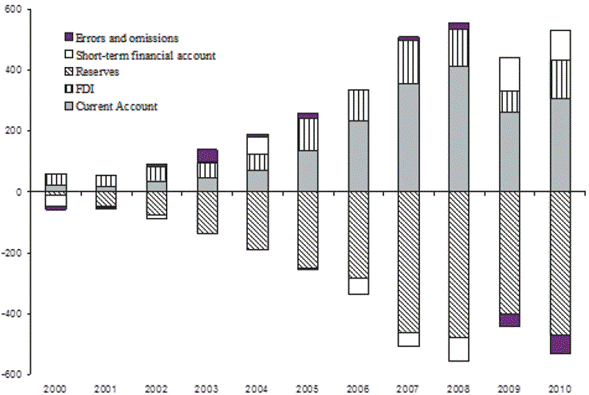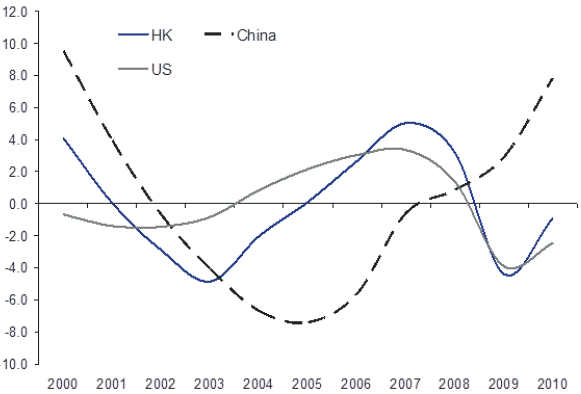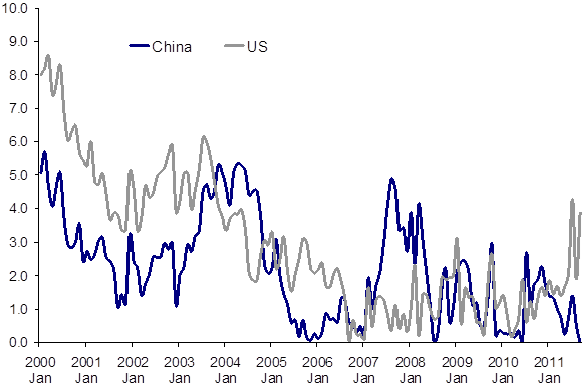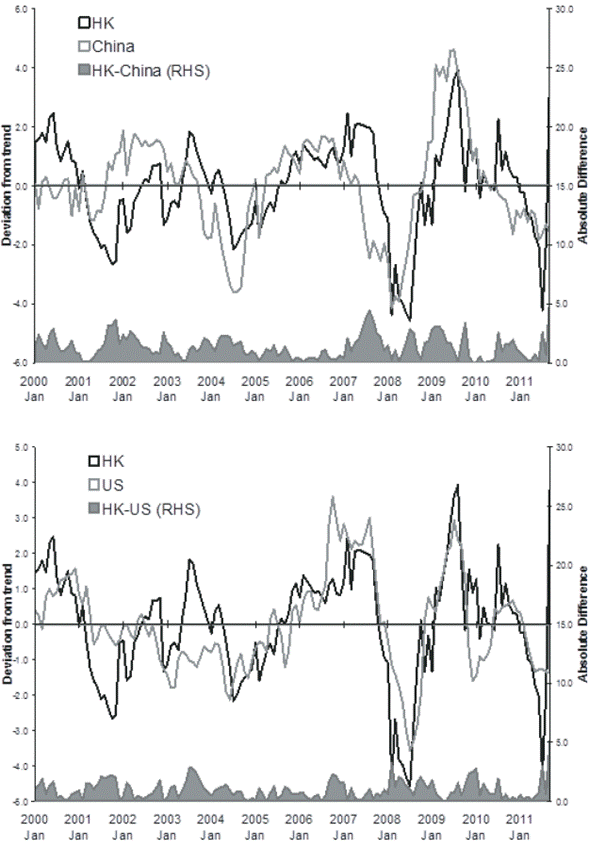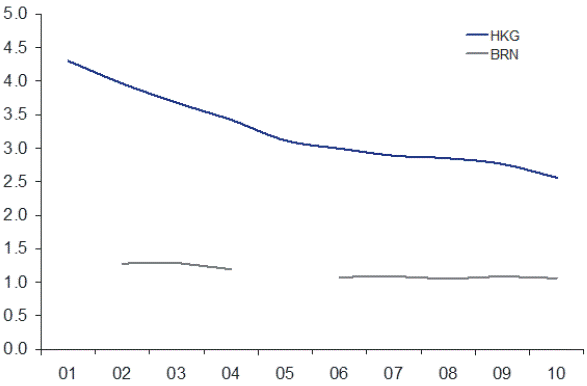INTRODUCTION
Today, world economies are still handicapped by the 2008-09 global financial crisis originated in the United States. In Hong Kong, recent pro-democracy demonstrations in 2014 have been regarded to have been driven by disgruntled middle class over rising property prices, stagnating wages, rising income inequality and crony capitalism, with massive portion of economic wealth concentrated in the hands of the elite group. Since the housing sector is largely linked to the riches, factors that fuel the skyrocketing housing market are essentially what drive rising income inequality.
As the findings of this paper reveal, though the US dollar is still the most appropriate monetary anchor for Hong Kong, the US monetary stance has nonetheless brought tremendous inflationary pressures to asset and property prices in Hong Kong. The Chinese renminbi, as findings show, is a promising alternative to the US dollar, and thus, it could be a more stabilizing monetary anchor in the future.
Historically, Hong Kong enjoys a track record of economic resiliency, as demonstrated during the 199798 Asian financial crises (see e.g. Ran, Voon & Li, 2010). Many have attributed this to its dollar-linked regime which makes the HK dollar almost impossible for speculators to prey on. Nonetheless, as pointed out by Chen (2001), during most of the Asian crisis, the HK dollar was supported by its huge foreign exchange reserves, not by its currency board. In the crisis period, billions of dollars flowed in and out of Hong Kong via electronic transfers without ever involving its currency board which was then based on notes and coins.
Indeed, the rigid exchange regime could have actually made Hong Kong exceptionally vulnerable to shocks from abroad especially those from the US. As noted in Goodstadt (2010), during run-ups to financial crises, credit expansions and asset bubbles in the US would spill over to Hong Kong almost instantaneously. In this regard, housing wealth effects do explain a non-negligible part of the volatility of consumption, output, and employment in Hong Kong (Funke & Paetz, 2013).
The overheating would force local authorities to tighten lending and banking regulation, resulting in controls that distort legitimate market operations. Meantime, following an adverse shock such as the subprime crisis, tensions in the HK interbank markets would rise virtually concurrently with those in US (Fung & Yu, 2010). To make matters worse, defensive steps taken by domestic authorities were found to be impotent in reducing interest rate spreads and alleviating fears of counter-party risk. Against this backdrop, such complications can be more severe in the wake of the recent rudderless policies of the US Federal Reserve System, the money manager of the international dollar.
In the same vein, studies have not shown price stability benefits from subscribing to the US policies. For instance, Devereux (2003) found that, since the 1983 inception of currency board through the 1997-98 Asian crisis, Hong Kong had to endure significantly higher inflation than that in the US. The study also discovered that lack of real exchange rate adjustment might have played a role to greater variability in real GDP. Similarly, Imai (2010) concluded that the dollar peg has failed to deliver price stability -Hong Kong experienced high inflation of 7.4% over 1985-97 before the Asian episode and an extended deflation of -2.0% over 1998-2007 after the turmoil-.
In light of the above, the following research questions can be posed. Firstly, how has Hong Kong fared in aspects such as price stability and trade competitiveness during the global crisis that originated in the US? Secondly, is the dollar-anchored regime still as supported as before? This paper first explores the dimensions pertaining to price movement and trade competitiveness and then examines the level of conformity to the criteria related to the optimum currency area (OCA) theory. Given extensive linkages between Hong Kong and China in trade, business cycle and inflation (see e.g. Gerlach-Kristen, 2009), China is used as a "control" to indicate the appropriateness of maintaining US as the monetary anchor country for Hong Kong. Throughout the analysis, data sampled are constrained by availability but generally ranged from 2000 to 2010.
The rest of the paper is organized as follows. The second section looks at the indicators pertaining to domestic price level and external competitiveness. The third section introduces the OCA theory and the criteria used. The fourth section examines the extents of conformity of Hong Kong to the respective criteria. Finally, fifth section discusses and concludes.
ON PRICE MOVEMENT AND TRADE COMPETITIVENESS
In a nutshell, signs of the US subprime crisis had begun to emerge in early 2007 but its real severity only began to manifest following the bankruptcy of Lehman Brothers in September 2008. The consequences of the crisis have primarily taken the form of disruptions in domestic interbank lending and international Eurodollar markets. Uncertainty about losses incurred by banks and financial institutions increased their liquidity needs but at the same time they were reluctant to lend to each other due to fears of counterparty risk.
Certain observers have blamed the falling US interest rates in the early 2000s (see Figure 1 for money market rate) following the tech bubble crash and Sept 11 attacks as a predominant factor behind the crisis. In 2003 to mid-2004, Fed funds rate had descended to only about 1%, believed to have fueled the mortgage bubble. The ensued tightening beginning in early 2005 is deemed too late as an effective tool to cool the overheated assets market.
Interest Rate Experience
How does the US interest rate compare with Hong Kong's? Consistent with its fixed dollar rate arrangement, the Hong Kong money market rate has moved in tandem with the US one, with only little deviations between them, as shown in Figure 1. The deviations can be explained by market inefficiencies, transaction costs, and differentials in perceived risk premium. As for EA5 (Emerging East Asian countries of Indonesia, Korea, Malaysia, Singapore, and Thailand), though the EA5 path also tracks the US one, because the EA5 countries do not rigidly peg their dollar rates, the EA5 average does not track the US rate as closely as the Hong Kong one does.
The immediate impact of Lehman's collapse on Hong Kong's interest rate can be seen from the sharp spike in Sept 2008-a result of abrupt repatriation of dollars back to US following a credit crunch in the dollar markets (see e.g. McKinnon, 2010) which contracted short-term money supply in the Chinese territory. Correspondingly, in 2008 there was a larger-than-usual net outflow of short-term financial capital, as portrayed in Figure 7.
Following that, the near-zero US short-term interbank rates since the end of 2008 and the subsequent "Quantitative Easing" for reducing long rates induced a flood of hot money into Hong Kong and other parts of East Asia, which posed greater growth potentials. The movement was driven by a combination of very low US interest rates and high expected returns in Hong Kong.
Though its nominal dollar rate is fixed, Hong Kong is still susceptible to inflationary pressure from influx of short-term capital that, if transmitted to the export sector, could raise the Hong Kong dollar in real terms. Unlike other central banks, as a currency board operating in an international financial hub, the Hong Kong Monetary Authorities cannot impose capital controls on incoming funds.
Accumulation of Reserves and Inflationary Pressure
In light of the above, despite being a currency board (which should be passive in principle), the HKMA has intervened by raising holdings of foreign reserves to draw out excess liquidity from its financial system. Vividly, it was an attempt to curb domestic inflation and simultaneously restrain real appreciation of the Hong Kong dollar.
This is made apparent by the exceptional growth of foreign exchange reserves during the global crisis in 2008-09, as revealed in Figure 2. The stock of reserves not only rose faster than in the earlier years but also more rapidly than the EA5 average after a temporal fall during the credit crunch in the Eurodollar market in the second half of 2008 that affected emerging Asian countries too. In fact, in a short period of 3 years of 2008-11, the US dollar value of Hong Kong's foreign exchange reserves rose almost twofold -from $160 billion to $280 billion-. As for the EA5 countries which embrace more flexible exchange rates, their foreign reserves have not risen as rapidly as Hong Kong's.
Domestic monetary sterilization operations by HKMA are also indicated by the sharp increase in base money1 in 2008-09 as depicted in Figure 3 while at the same time, other components of money supply such as M22 and M3 have risen more steadily. Nevertheless, despite these sterilization operations, M2 and M3 still increased more rapidly than nominal GDP and this seemed inflationary.
In this regard, sharp build-up of foreign exchange reserves was too big to be fully offset by domestic monetary sterilization operations. The resulting loss of monetary control contributed to higher inflation (CPI) since 20073, to a level as high as the EA5 average, as shown in Figure 4. After the 2009 recession, prices in Hong Kong grew more quickly, surpassing the EA5's in 2011.
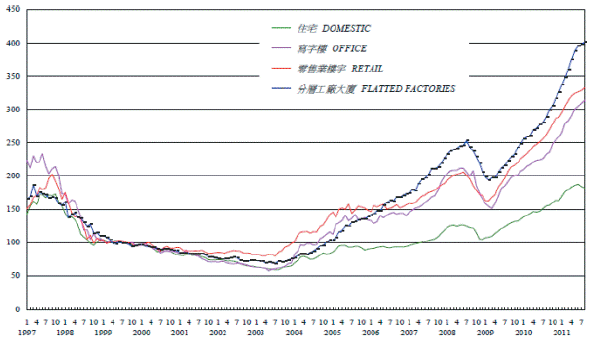
Source: Rating and Valuation Department, Hong Kong
Figure 5 Price indexes for Hong Kong property market (1999=100), 1997:1-2011:7
The most striking inflationary impulse can be seen in the property markets where prices rose steadily from the runup period to the subprime crisis, fell somewhat only in 2009 owing to the post-crisis recession, but continued to climb at an even faster rate right after. Specifically, the upward momentum in the property prices can be traced back to 2003, during period of very low interest rates in the US and Hong Kong (see Figure 1). Whilst nominal interest rates had been greater in 2005-2008, given greater rates of CPI inflation in Hong Kong (see Figure 4) real interest rates had actually not moved up as much. Therefore, the credit tightening in that period might have been insufficient to cool the property markets in Hong Kong.
On the above evidence, the fixed-exchange-rate economy of Hong Kong does not appear to have enjoyed more stable prices or lower rates of inflation against the EA5 countries during the period of turbulence.
ON COMPETITIVENESS
With respect to international competitiveness, the rise in domestic prices has made foreign purchases from Hong Kong more expensive despite a stable nominal dollar rate. This is signified by a downward shift in the real dollar rate to a lower level (implying a real appreciation4) in mid-2008, as shown in Figure 6. Nevertheless, saved by its fixed nominal exchange rate to the US dollar, real value of the HK dollar did not appreciate as high as the average of the EA5 counterparts.

Source: IFS
Figure 6 Real dollar rate as deflated by relative CPIs (2000:1=100), Hong Kong and EA5 Average, 2000:1-2011:8
Figure 6 also shows that from 2000 to mid-2008, the real value of HK dollar had actually been decreasing, due to its falling prices in relation to the US ones. This gradual increase in real depreciation of the HK dollar is compatible with its rising current account surplus till 2008, as portrayed in Figure 7. Whilst prices had already gone up in 2008, the year's trade balance was yet to be affected by the price increase, probably due to lags and agreements set in previous prices.
Figure 7 also reveals a slowdown in current account surpluses of Hong Kong in 2009 and 2010, amidst a sluggish global economy. During this period, exports from (imports to) Hong Kong had already been more expensive (cheaper), as reflected by the real appreciation of the HK dollar (Figure 6).
Specifically, as regards external balance, Figure 9 shows the product and service trade balances of Hong Kong with US and with the world. From the chart, it is obvious that the rising current account surplus till 2008 is largely due to rising trade surplus in services. This seems compatible with the international financial center status of Hong Kong and the booming housing and financial markets during the run-up period to the subprime crisis. Against the world, till 2008 surpluses in service trade had in effect more than offset the deficits in product trade. The rising deficit in the product sector could have been a result of a shift of resources to the more profitable (financial) service sector during the boom. As for trade with US, a trade pattern similar to that with the world can be seen.

Source: Trade Map: International Trade Center.
Figure 9 Trade balance with US and with World, EX-IM (US$ billion), 2000-2009
Also notice that throughout the years, short-term capital outflows were virtually greater than its inflows, as indicated by the negative balances of short-term financial account. However, the reverse is true for 2009 in which net balance of short-term capital flows became positive, signifying greater inflows than outflows. This corroborates the exceptional growth in foreign exchange reserves discussed earlier. The capital balance returned to its usual pattern in 2010 when the panic subsided, as reflected by the slowed rates of growth in foreign reserves and monetary base (shown in Figures 2 and 3 respectively).
Pertaining to reserve, a "negative" value actually indicates an addition to the reserve pool. This is clear when one examines the annual balance of payments of China in Figure 8 which records consistent current account surpluses that were financed by accumulation of foreign reserves. In 2009-2010, short-term financial balances of China were also positive, signifying influx of hot money to China.
All the evidence above appears to indicate massive inflows of "hot" capital into Hong Kong as a result of near-zero interest rates in US since the end of 2008. As interest rates in Hong Kong are parallel with those in US, with no expectations of Hong Kong dollar appreciating against the US dollar, it appears that these funds were not looking for higher yields but were aiming primarily at the booming property market, a sector highly sensitive to movements in interest rates. Hence, despite a slight dip in property prices in 2009 amidst the global recession, the housing prices have continued to rise through 2011, increasing even more rapidly than that preceding the recession (Figure 5).
Have the increased capital inflows been beneficial? One way of checking this is by looking at the rates of unemployment in Figure 10. Firstly, over the years examined, unemployment rate in Hong Kong has always been higher than the EA4 average. Secondly, though unemployment rate had been declining during the run-up years to the subprime crisis, it stopped falling since the onset of the crisis, and even increased more rapidly than the EA4 one during the peak of the turmoil in 2008-09. On this finding, the increased capital inflows do not appear to provide employment gains to Hong Kong.
Conformity to Optimum Currency Area Criteria
The foundations of OCA theory were laid out by Mundell (1961)) and McKinnon (1963), and then refined by Kenen (1969) and Krugman (1990). In essence, the OCA theory outlines the criteria under which a country or economic zone can reap large benefits and/or substantially reduce the cost of joining a currency area. As summarised by Boreiko (2003):

Source: IFS Note: Consistent data for Indonesia not available.
Figure 10 Unemployment rate (%), Hong Kong and EA4 Average (excluding Indonesia), 2000Q1-2011Q1
The OCA theory concerns about certain benefits and costs associated with adopting a single currency which depend on the degree of convergence of the economies. The benefits are associated with economizing on exchange costs and importing the credibility of the union's central bank, thus reducing the inflationary expectations and level of inflation. As for the associated costs, they are essentially the opposite of the benefits of having an independent monetary policy and exchange rate, which are useful as a means of coping with shocks that are asymmetric between the potential monetary union partners. (2003, p. 315)
Whilst the benefit of importing price stability from the US has been shown to be questionable in the preceding section, in this section we shall explore if Hong Kong's dollar peg is still as appropriate as before, based on the prescriptions inspired by the OCA theory. Following Quah (2017, 2016a, 2014b), and Quah and Crowley (2010, 2012a, 2012b), the OCA criteria investigated in this section are bilateral trade intensity, business cycle symmetry, inflation convergence, real interest rate synchronisation, and diversification in exports. These criteria were implemented by Artis and Zhang (2002) and interestingly the efficacy of the criteria was evidenced when Portugal, Italy, Greece, and Spain were selected as the group which possesses the least similar OCA features against Germany. This group of four member states is the most distressed euro area members today.
Except for the diversification variable, for all dimensions, the degree of conformity to the OCA theory depends on a reference country. Hence, aside from using US as the reference, as a "control", China is used as an alternative reference. While the choice of US as the reference country is obvious, China is of course one possible reference country since Hong Kong has ever been closely tied to China politically and economically since its return to its motherland in 1997. This is more so in the current landscape where China has begun to internationalize its currency by allowing more direct currency exchanges with renminbi and issuance of bonds denominated in yuan.
BILATERAL TRADE INTENSITY
Mundell (1961) stresses the criterion of trade when evaluating the benefits of fixed exchange rates against the gains from exchange rate flexibility that could cushion shocks when wages and prices are rigid. In the same vein, McKinnon (1963) suggests that countries which trade a great deal with each other are good candidates for monetary integration as the benefits in terms of transaction cost savings and exchange rate certainty would be greatly enhanced. In fact, Bayoumi and Eichengreen (1997) have detected that European countries which achieved the greatest levels of bilateral trade also experienced the greatest increase in readiness for monetary unification. Accordingly, it is obvious to use this facet as one criterion to check if US is still as appropriate as before as the monetary anchor country for Hong Kong.
For this purpose, a bilateral trade intensity measure is adopted here. For Hong Kong i, trade openness with US (and China) is measured by bilateral trade intensity, (x i,r + m i , r ) / (x i . + m i .) where x i . and m i . are the exports and imports of goods of the country and subscript r indicates destination to or source from US (and China).
Business Cycle Symmetry
It is clearly understood that when business cycles are substantially synchronised between two countries, the argument for flexible exchange rates to buffer asymmetric shocks becomes largely irrelevant. Hence, for Hong Kong the greater the business cycle synchronisation with either US or China, the stronger the argument for adopting the corresponding monetary policy. In terms of measurement, it has become popular to implement this OCA criterion according to synchronicity of business cycles by evaluating the cyclical component of output at business cycle frequencies. In this paper, the method of Gerlach (1988) and Baxter and Stockman (1989) is adopted where cyclical components of annual real GDP series are detrended using Hodrick-Prescott (H-P) filter. Since GDP indexes at 2005 prices are used, detrended series are directly comparable.
Inflation Convergence
According to Artis and Zhang (2002), the traditional OCA literature originated during the era of 'fix-price' economics; so introducing inflation convergence as one criterion could be regarded simply as an appropriate normalisation. From another perspective, since similar inflation rates can result from similarities in monetary and fiscal policy stances and economic structure, the cost of joining a currency area is presumably low when inflation rates are similar across members (Nguyen, 2007). Besides, convergence in inflation also reflects similarity in the degree of trade union aggressiveness and labour costs between countries-implying lesser need for flexibility in nominal exchange rates in correcting current account imbalances (Fleming, 1971). This criterion is measured by absolute CPI inflation differential, |x i -x r |where x i. and x r are the respective rates of inflation in Hong Kong and the reference country. Here, the absolute value is used since the magnitude of the variable is of concern. Lower differentials indicate greater convergence in inflation and vice versa.
Real Interest Rate Cycle Synchronization
Though not listed as one of the criteria based on the traditional OCA theory, this factor is indicated by a 'revealed preference' argument (Artis & Zhang, 2002). If the monetary policy of a country historically has differed little from that of the reference country, the cost of relinquishing monetary independence is accordingly low, so that synchronisation in real interest rates may be interpreted as an indicator of coordination in monetary policy. In addition, real interest rate cycle synchronicity with a credible country could also imply willingness to commit to policies of high counter-inflationary credibility (Tavlas, 1993). Following Artis and Zhang (2002), real interest rate series are detrended by applying the H-P filter, as in the business cycle synchronicity criterion. To ensure consistency, lending rate and CPI inflation rate are used to compute real interest rate.
Export Diversification
As put it by Kenen (1969), for a diversified economy, even if each of its export sectors might be subject to adverse shocks, if the shocks are substantially independent and the country produces a sufficiently large variety of goods, the law of large numbers will come into play and total production will not suffer much. Thus, it is easier to fix the currency value in a diversified economy than that of a specialised economy.
Following Nguyen (2007), the degree of export diversification is measured by a diversification index, namely the inverse of the period average of the annual Herfindahl index which is a common indicator of degree of specialisation. The Herfindahl index is computed as H = Σn . i=1 S i 2 where S i . is share of the export of product i, and n is the number of products exported. The higher the value of this diversification index, the more diversified the exports. Since data of individual export products are unavailable, annual export data according to the first-digit sub-industries of the United Nation Standard International Trade Classification (SITC) Revision 2 are used. The categories are displayed in Table 1.
Table 1 United Nation's Standard International Trade Classification (SITC) Revision 2
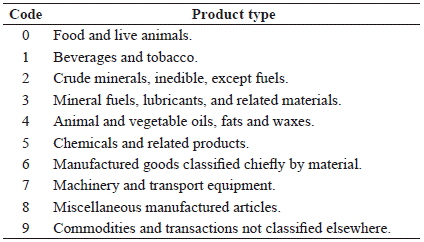
Source: Nguyen (2007).
APPRAISING THE OCA FEATURES OF HONG KONG
The OCA view states that the greater the degree of trade with a country, the larger the benefits gained from exchange rate fixation. Figure 11 charts the bilateral trade intensities (in percent) of Hong Kong with US and with China for 2000-2009. With respect to product trade, Hong Kong's level of trade with China had not only been about four times as large as that with US but had also been rising steadily throughout the period. On the contrary, the degree of trade with US had been declining gradually. Similarly, for service trade with Hong Kong, China's share is substantially larger than the US one.
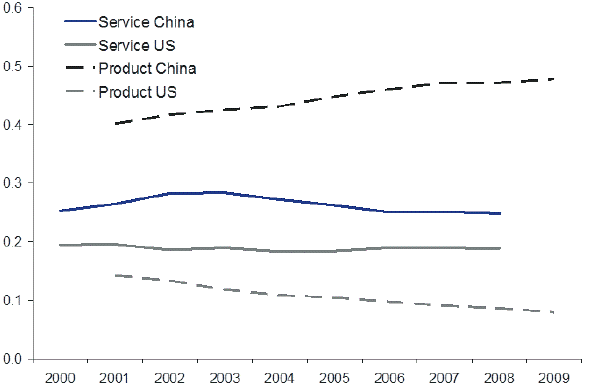
Source: Trade Map: International Trade Center
Figure 11 Bilateral trade intensities with US and with China (%), Hong Kong, 2000-2009
Besides the above, one can also observe that the relative importance of product and service trade is different for US and China. Vis-à-vis US, the extent of trade in service is greater whilst against China, product trade is more substantial. This seems consistent with the product-based economy of China and the service-based economy of US.
Secondly, with respect to business cycle symmetry, Figure 12 reveals that for 2000-2003, Hong Kong is relatively parallel with China but for 2004-2010, Hong Kong is more symmetrical with US. In this regard, it seems that Hong Kong was more convergent with US in the booming years leading to the subprime episode and the years thereafter.
Incidentally, if we observe the movement of real exchange rate of Hong Kong against the EA5 average in Figure 6, it is apparent that when the real Hong Kong dollar is more expensive than the EA5 average, Hong Kong's real income tends to fall (indicated by a downturn in the business cycle), and vice versa, when it is cheaper than the EA5 average, its real income tends to rise (represented by an upturn in the business cycle). This observation appears in line with the fact that East Asian growth is export-led and that economies in the region are competitors to each other internationally. Therefore, it is justifiable to include export diversification as one dimension to be examined here.
Thirdly, on convergence of inflation, Figure 13 shows an increase in Hong Kong's convergence with the US over the period but for 2011 there is an obvious divergence. Convergence with China has gone up too and been greater than with US as for the most parts of 2000-03, 2005-06, and 2011.
Fourthly, real interest rate cycle synchronicity is represented by the charts in Figure 14. For each chart, the left axis represents deviations from trend (or cycles) of the real interest rate series whilst the right axis indicates absolute differences between the cycles. The left chart compares the HK and the China cycle whilst the right chart compares the HK and US cycle. From the charts, one can find that the HK cycle is more convergent with the US cycle. Also, though Hong Kong's monetary policy is not directly linked to China's, the HK cycle is also notably parallel with China's.
Lastly, let us look at the variable indicating flexibility of Hong Kong's export sector to withstand shocks. Figure 15 signifies that Hong Kong's extent of export diversification5 had been steadily falling over the 20012010 period-decreasing faster in the first half of the decade and slower in the second half. This appears to be in line with the international trade theory popularized by Paul Krugman which suggests that a liberalized and open economy will over time be more specialized in its production, owing to economies of scale and accumulation of competitive advantage. Differently, as the figure also shows, the diversification level of Brunei, an oil-exporting economy in Southeast Asia with a currency board on the Singapore dollar, has remained stable throughout.
CONCLUSION
As the findings suggest, with an increasingly specialized economy of Hong Kong (indicated by diminishing export diversification), high domestic unemployment, and the outlook of sustained money expansions by the US, it would be more challenging for Hong Kong to maintain its fixed exchange regime without greater inflation and higher real exchange rate. On the OCA-based dimensions, the findings are mixed and the inferences can be different depending on which variable we look at.
Despite this, in broad, the evidence appears to corroborate the fixed exchange regime of Hong Kong with the US as the monetary anchor country during the global crisis period but at the same time China does appear as a remarkably plausible contender to the US as the anchor country.
So, how do the findings compare with the questions posed in the beginning of this paper? On price stability, it seems clear that during the global crisis period Hong Kong had not performed as well as that in the past. However, Hong Kong was as good as the EA average. On competitiveness, it had not been as good as in the past but had been better than the EA average. With respect to confirmation from the OCA-motivated facets, the rigid arrangement was still supported but in a declining manner.
Though adopting the renminbi as the monetary anchor could be an option to the present arrangement, in the short run, this alternative seems to be a little far-fetched as the Chinese yuan has yet to be fully convertible on the capital account. Having said that, recently we can see efforts of internationalizing the yuan by the People's Bank of China such as cross-border payments in yuan, direct currency swaps with close trading partners, and establishment of offshore market in Hong Kong where bonds denominated in renminbi are issued and traded.
Along these lines, it seems promising that in the period of 10 to 15 years, as the Chinese economy and its share of world trade grow to become as large as the US's, the Chinese currency would certainly be one of the internationally-traded reserve currencies. At that moment, without having to confront political constraints as those plaguing the euro participants, it will be easier for Hong Kong to unify its currency with renminbi when the time is ripe economically.
But then again, the findings and interpretations made here remain to be suggestive rather than conclusive. Admittedly, the approach used lacks the rigorousness from an econometric perspective but it does provide a straightforward and persuasive elucidation on the subject. Future studies are encouraged to employ other available techniques to verify the findings and to explore other related facets such as political and social dimensions in light of recent discontents over rising costs of living in Hong Kong.













